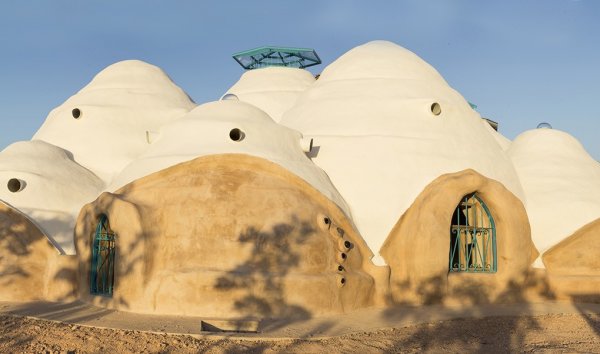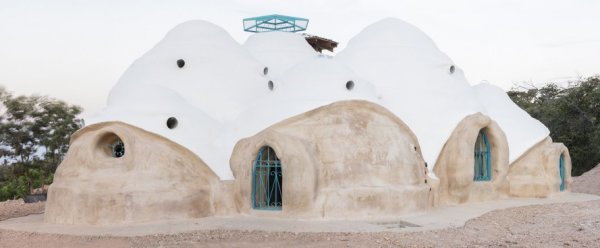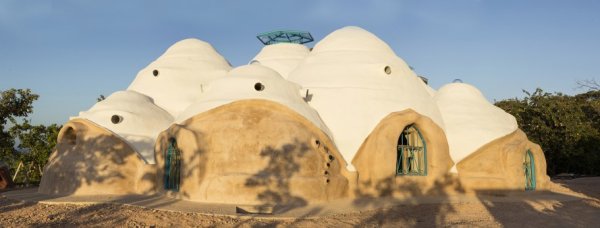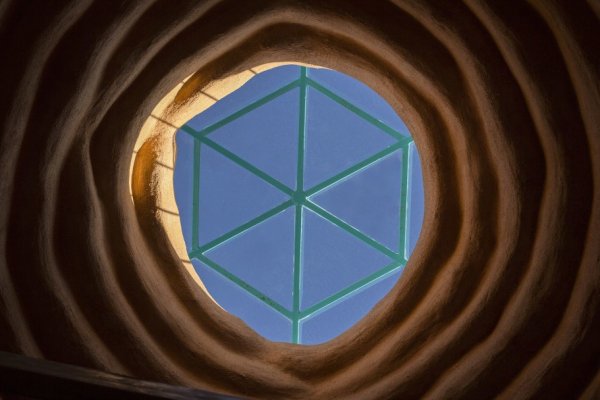Self Sufficient Dome Home Is Constructed In Costa Rica Using All Local Materials

A new dome home is currently being constructed in Costa Rica made from local materials and built to withstand the tough climate of the area, using the earthbag technique. Earth bag building involves construction using local soils, which cuts down on costs as well as decreasing the time that it takes to construct, whilst also being eco-friendly. This innovative technique is becoming more popular around the world, which is largely thanks to Cal-Earth in Hesperia, California, according to reports.

Image via Ayal Bryant and Deborah Solís Ruiz
Alumnus of the earth building center Barro Vivo Costa Rica, which was founded by Nader Khalili, is close to completing the 1,700 square foot building in Turrubares, which was constructed using the Iranian architect’s pioneering super adobe technique. Ayal Bryant, from Barro Vivo CR, told Inhabitat that their goal was to construct a building that would remain cool during the day without the need for air conditioning or fans. This is essential in this area as it is a relatively hot and dry climate, where they receive about three months of rain and the rest of the year is very dry. She said, “So we decided to go for super adobe mainly because of its thermal properties but also because one of how it feels almost primal to live within.”

Image via Ayal Bryant and Deborah Solís Ruiz
The house is made up of five full domes and four half domes, and was buried nearly 20 inches below ground level to further protect it from the elements. Inhabitat said, “All of the earth removed to bury the house was used with a five percent stabilizing cement admix for the walls. Oriented towards the Pacific Ocean to take advantage of prevailing winds, the home has two bedrooms, a large living room, three bathrooms, a kitchen, service room, walk-in closet and pantry. There is a mezzanine over the kitchen and even a balcony.” Ayal said, “A big effort was made to use as much local and salvaged material as possible even though this meant more work in sourcing and preparing it. So all the wood used is salvaged from old houses that have been knocked down and the [remaining] sand used as part of the mix for the walls came from less than a mile away.”

Image via Ayal Bryant and Deborah Solís Ruiz
The team also installed a rainwater catchment system on the roof to collect and store water, which then mitigates the reliance on the local municipal system. There are also further plans to build compost toilets throughout the buildings, which will utilise the material as fertiliser outside, in tandem with a living machine wastewater treatment system that will be used to irrigate the garden. This construction is a revelation for local and low-impact construction, which is a huge step towards building successful self-sufficient homes.
THIS ARTICLE IS OFFERED UNDER CREATIVE COMMONS LICENSE. IT’S OKAY TO REPUBLISH IT ANYWHERE AS LONG AS ATTRIBUTION BIO IS INCLUDED AND ALL LINKS REMAIN INTACT.
Leave Comment: